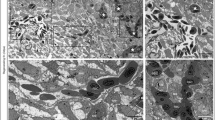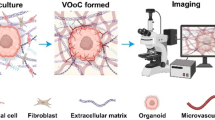Abstract
Pericytes play a key role in the process of vascular maturation and stabilization however, the current methods for quantifying pericyte coverage of the neovasculature are laborious and subjective in nature. In this study, we have developed an objective, sensitive, and high-throughput method for quantifying pericyte coverage of angiogenic vessels by analyzing the expression of the pericyte-specific gene, the regulator of G-protein signaling 5 (RGS5). We determined that RGS5 expression was up-regulated during a defined developmental time period in which nascent vessel sprouts acquired a pericyte covering. Furthermore, RGS5 expression was dramatically reduced in vessels with poor pericyte coverage compared to normal angiogenic vasculature. Finally, we determined that the susceptibility of nascent vessels to regression by vascular endothelial growth factor (VEGF) inhibition was significantly reduced following RGS5 up-regulation, further implicating RGS5 in pericyte-endothelial cell interactions and the vascular maturation process. These studies establish the use of RGS5 gene expression as a quantitative and robust measure of pericyte coverage of neovasculature. This method provides a tool for vascular biologists studying pericyte-endothelial cell interactions and vascular maturation in both normal and pathological conditions, such as diabetic retinopathy and cancer.




Similar content being viewed by others
Abbreviations
- nRGS5:
-
PECAM1-Normalized Regulator of G-protein signaling 5
- PDGF-B:
-
Platelet-derived growth factor-B
- PDGFRβ:
-
Platelet-derived growth factor receptor β
- RGS5:
-
Regulator of G-protein signaling 5
- SMA:
-
Smooth muscle actin
- VEGF:
-
Vascular endothelial growth factor, vascular permeability factor
References
Gerhardt H, Betsholtz C (2003) Endothelial–pericyte interactions in angiogenesis. Cell Tissue Res 314(1):15–23
Alon T, Hemo I et al (1995) Vascular endothelial growth-factor acts as a survival factor for newly formed retinal-vessels and has implications for retinopathy of prematurity. Nat Med 1(10):1024–1028
Benjamin LE, Golijanin D et al (1999) Selective ablation of immature blood vessels in established human tumors follows vascular endothelial growth factor withdrawal. J Clin Invest 103(2):159–165
Benjamin LE, Hemo I et al (1998) A plasticity window for blood vessel remodeling is defined by pericyte coverage of the preformed endothelial network and is regulated by PDGF-B and VEGF. Development 125(9):1591–1598
Darland DC, D’Amore PA (1999) Blood vessel maturation: vascular development comes of age. J Clin Invest 103(2):157–158
Baluk P, Morikawa S et al (2003) Abnormalities of basement membrane on blood vessels and endothelial sprouts in tumors. Am J Pathol 163(5):1801–1815
Morikawa S, Baluk P et al (2002) Abnormalities in pericytes on blood vessels and endothelial sprouts in tumors. Am J Pathol 160(3):985–1000
Nehls V, Drenckhahn D (1991) Heterogeneity of microvascular pericytes for smooth-muscle type alpha-actin. J Cell Biol 113(1):147–154
Ozerdem U, Grako KA et al (2001) NG2 proteoglycan is expressed exclusively by mural cells during vascular morphogenesis. Dev Dyn 222(2):218–227
Nehls V, Denzer K et al (1992) Pericyte involvement in capillary sprouting during angiogenesis in situ. Cell Tissue Res 270(3):469–474
Berger M, Bergers G et al (2005) Regulator of G-protein signaling-5 induction in pericytes coincides with active vessel remodeling during neovascularization. Blood 105(3):1094–1101
Cho H, Kozasa T et al (2003) Pericyte-specific expression of Rgs5: implications for PDGF and EDG receptor signaling during vascular maturation. FASEB J 17(1):440–442
Lindahl P, Johansson BR et al (1997) Pericyte loss and microaneurysm formation in PDGF-B-deficient mice. Science 277(5323):242–245
Goodwin A. M. a. P. A. D. A. (2008) Vessel maturation and perivascular cells. Tumor Angiogenesis: Mechanisms and Cancer Therapy. N. a. D. M. Fusenig, Springer (in press)
Bondjers C, Kalen M et al (2003) Transcription profiling of platelet-derived growth factor-B-deficient mouse embryos identifies RGS5 as a novel marker for pericytes and vascular smooth muscle cells. Am J Pathol 162(3):721–729
Chen X, Higgins J et al (2004) Novel endothelial cell markers in hepatocellular carcinoma. Mod Pathol 17(10):1198–1210
Furuya M, Nishiyama M et al (2004) Expression of regulator of G protein signaling protein 5 (RGS5) in the tumour vasculature of human renal cell carcinoma. J Pathol 203(1):551–558
Paik JH, Skoura A et al (2004) Sphingosine 1-phosphate receptor regulation of N-cadherin mediates vascular stabilization. Genes Dev 18(19):2392–2403
Hobson JP, Rosenfeldt HM et al (2001) Role of the sphingosine-1-phosphate receptor EDG-1 in PDGF-induced cell motility. Science 291(5509):1800–1803
Rosenfeldt HM, Hobson JP et al (2001) EDG-1 links the PDGF receptor to Src and focal adhesion kinase activation leading to lamellipodia formation and cell migration. FASEB J 15(14):2649–2659
Rosenfeldt HM, Hobson JP et al (2001) The sphingosine-I-phosphate receptor EDG-I is essential for platelet-derived growth factor-induced cell motility. Biochem Soc Trans 29:836–839
Abramsson A, Lindblom P et al (2003) Endothelial and nonendothelial sources of PDGF-B regulate pericyte recruitment and influence vascular pattern formation in tumors. J Clin Invest 112(8):1142–1151
Armulik A, Abramsson A et al (2005) Endothelial/pericyte interactions. Circ Res 97(6):512–523
Heldin CH, Eriksson U et al (2002) New members of the platelet-derived growth factor family of mitogens. Arch Biochem Biophys 398(2):284–290
Hellstrom M, Kalen M et al (1999) Role of PDGF-B and PDGFR-beta in recruitment of vascular smooth muscle cells and pericytes during embryonic blood vessel formation in the mouse. Development 126(14):3047–3055
Hirschi KK, Rohovsky SA et al (1998) PDGF, TGF-beta, and heterotypic cell–cell interactions mediate endothelial cell-induced recruitment of 10T1/2 cells and their differentiation to a smooth muscle fate. J Cell Biol 141(3):805–814
Bjarnegard M, Enge M et al (2004) Endothelium-specific ablation of PDGFB leads to pericyte loss and glomerular, cardiac and placental abnormalities. Development 131(8):1847–1857
Jo N, Mailhos C et al (2006) Inhibition of platelet-derived growth factor B signaling enhances the efficacy of anti-vascular endothelial growth factor therapy in multiple models of ocular neovascularization. Am J Pathol 168(6):2036–2053
Bergers G, Song S et al (2003) Benefits of targeting both pericytes and endothelial cells in the tumor vasculature with kinase inhibitors. J Clin Invest 111(9):1287–1295
Green LS, Jellinek D et al (1996) Inhibitory DNA ligands to platelet-derived growth factor B-chain. Biochemistry 35(45):14413–14424
Ruckman J, Green LS, Beeson J et al (1998) 2’-Fluoropyrimidine RNA-based aptamers to the 165-amino acid form of vascular endothelial growth factor (VEGF-165). Inhibition of receptor binding and VEGF-induced vascular permeability through interactions requiring the exon 7-encoded domain. J Biol Chem 273:20556–20567
Fruttiger M (2007) Development of the retinal vasculature. Angiogenesis 10:77–88
Uemura AK, Kusuhara S et al (2006) Angiogenesis in the mouse retina: a model system for experimental manipulation. Exp Cell Res 312(5):676–683
Ishida S, Usui T et al (2003) VEGF(164)-mediated inflammation is required for pathological, but not physiological, ischemia-induced retinal neovascularization. J Exp Med 198(3):483–489
Usui T, Isbida S et al (2004) VEGF(164(165)) as the pathological isoform: differential leukocyte and endothelial responses through VEGFR1 and VEGFR2. Invest Ophthalmol Vis Sci 45(2):368–374
von Tell D, Armulik A et al (2006) Pericytes and vascular stability. Exp Cell Res 312(5):623–629
Acknowledgements
The authors thank Elise Daly, Andrea DeErkenez, Sofia Ioannidou, Meihua Ju, Dominik Krilleke, Carolina Mailhos, and Vladimir Mastyugin for helpful discussions. The authors thank Omar DelGado and Meihua Ju for assistance with CoNV model generation and Laurette Burgess, Eva Skokanova, and Hongfeng Ma for exceptional animal care and assistance with tissue harvesting. Lastly, the authors thank Lori Mullin and Michael Gee for Taqman support.
Author information
Authors and Affiliations
Corresponding author
Rights and permissions
About this article
Cite this article
Mitchell, T.S., Bradley, J., Robinson, G.S. et al. RGS5 expression is a quantitative measure of pericyte coverage of blood vessels. Angiogenesis 11, 141–151 (2008). https://doi.org/10.1007/s10456-007-9085-x
Received:
Accepted:
Published:
Issue Date:
DOI: https://doi.org/10.1007/s10456-007-9085-x




